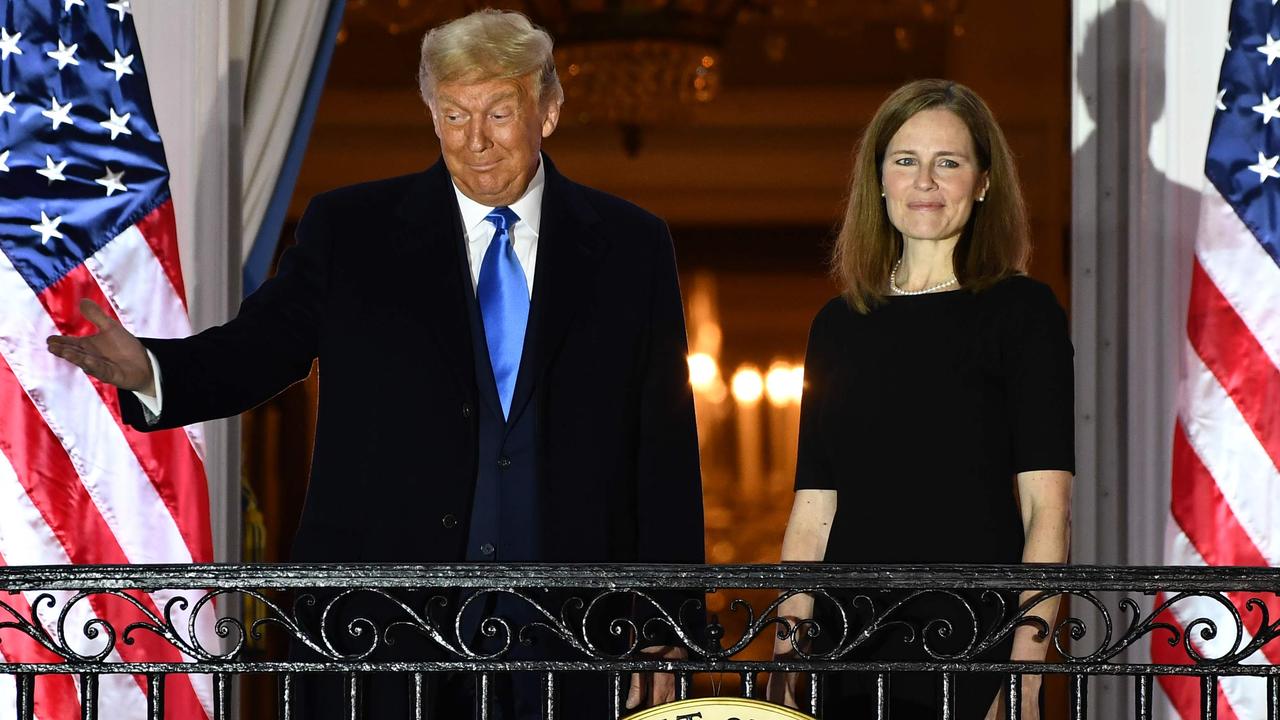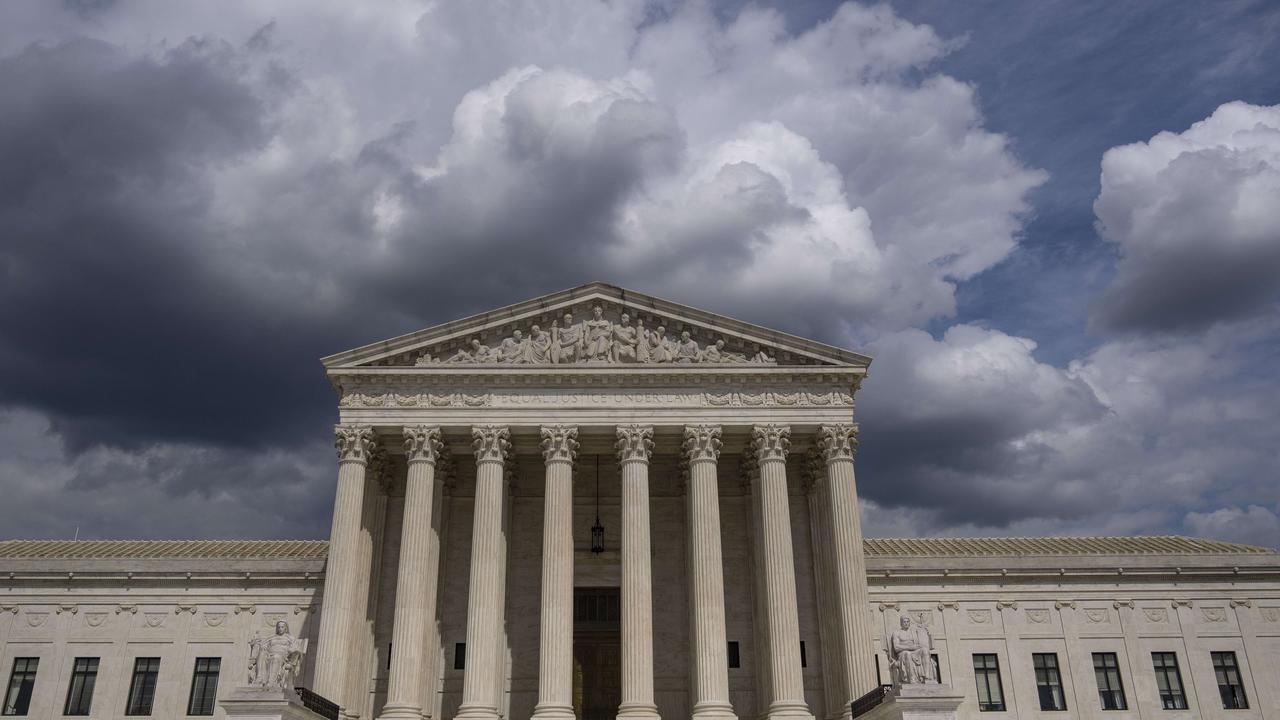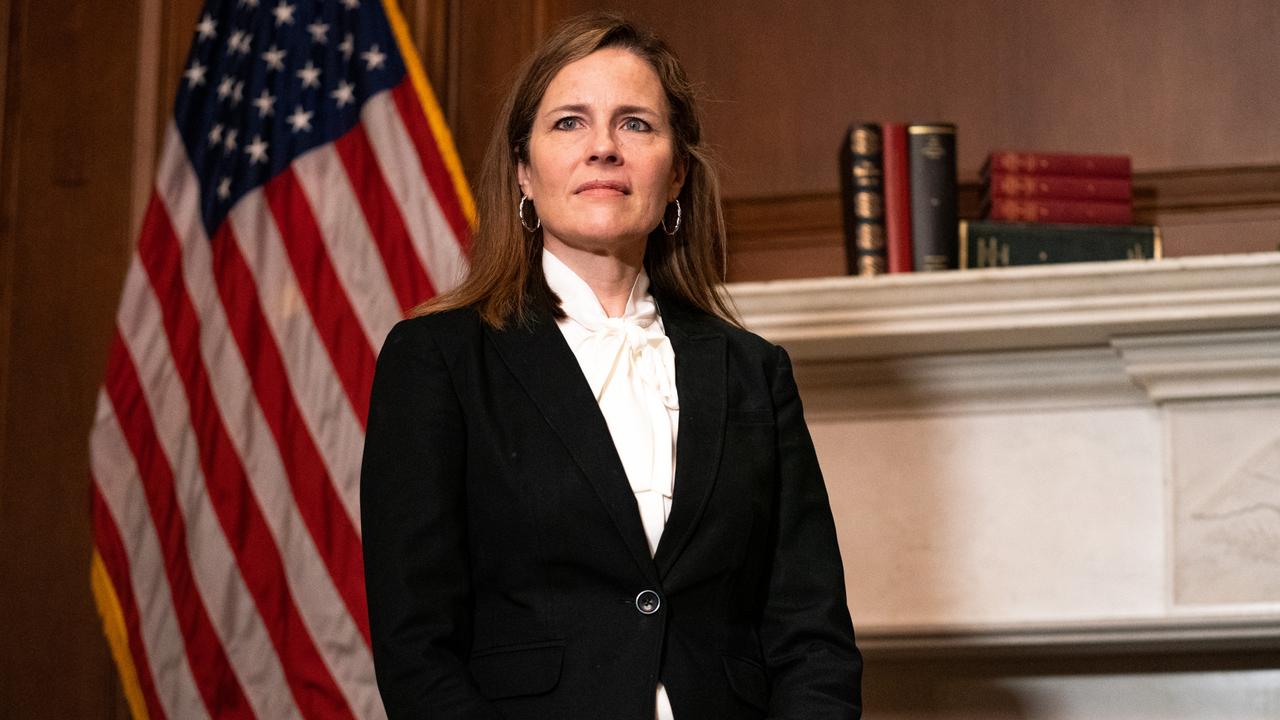Donald Trump’s appointment of Justice Amy Coney Barrett to the Supreme Court appears to have paid off
Just before last year’s election, Donald Trump got a chance to pick one last Supreme Court justice. Months later, his choice is being vindicated.
Eight days before last year’s US election, the Republican-controlled Senate voted to make Amy Coney Barrett a Supreme Court justice.
She was then-president Donald Trump’s third nominee to the court, following his earlier appointment of Justices Neil Gorsuch and Brett Kavanaugh.
But her ascension was far more significant. Because unlike the other two, Justice Barrett did not replace a fellow conservative. The seat she filled had been vacated not two months earlier by the death of Justice Ruth Bader Ginsburg, an icon of progressive law.
Justice Ginsburg died in September. Mr Trump and the Republicans in Congress rushed to confirm a replacement before the November election, seizing their chance to shift the Supreme Court’s balance even further to the right.
Ultimately, Justice Barrett was confirmed in record time, just 30 days after Mr Trump announced her nomination, infuriating Democrats and delighting conservatives.
The court was suddenly split 6-3 in the right’s favour, putting previously unattainable goals of the conservative movement within reach.
Chief among them: overturning Roe vs Wade, the landmark ruling from 1973 that legalised abortion throughout the US.
For years, Mr Trump had promised to appoint justices who would overturn Roe, having changed his own stance from being “very pro-choice” to pro-life when he entered Republican politics.
At the last conceivable opportunity, days before the election that would turf him from office, Mr Trump got his chance to deliver. He got Justice Barrett confirmed. Now the court is poised to reconsider its position on abortion – and she holds the decisive vote.
RELATED: Supreme Court to hear critical abortion case

How we got here
On Monday morning, the Supreme Court announced it had agreed to hear a case called Dobbs vs Jackson Women’s Health Organisation. It concerns a law passed by Mississippi in 2018, which banned abortion after 15 weeks of pregnancy.
That law was promptly struck down in the lower courts, because of Roe vs Wade.
In 1973, the Supreme Court ruled that the government could ban abortion, but only from the point of “viability” onwards, i.e. the time at which a foetus can realistically survive outside the womb. According to medical experts, that threshold is reached at about 24 weeks.
The court reaffirmed that “the line should be drawn at viability” in Planned Parenthoold vs Casey in 1992.
“A state may not prohibit any woman from making the ultimate decision to terminate her pregnancy before viability,” it said.
This has been the legal precedent in the US for decades. Thus, the Mississippi law banning abortion from 15 weeks onwards was always going to be struck down. The outcome was so obvious that Judge Carlton Reeves accused Republicans of passing a law they “knew was unconstitutional” on purpose.
Why would they do such a thing? Because it gave them an avenue to get the abortion issue before the Supreme Court again.
The Supreme Court is primarily an appellate court. Most of the cases it deals with do not start there; they have already gone through the lower courts, and the Supreme Court acts as the last point of appeal.
So, when Mississippi’s 15-week ban was struck down, the state appealed Judge Reeves’ decision. A year later, the Fifth Circuit Court of Appeals upheld his ruling. And at that point, Mississippi could petition the Supreme Court.
It did so in June of 2020.

Behind the scenes
This is where Justice Barrett’s influence comes in.
Keep in mind, the Supreme Court is not obligated to hear every case. It chooses whether or not to take up an appeal – hence the need to petition it.
The justices privately consider petitions and vote on whether to grant them. At least four of the nine justices need to say yes.
When Dobbs first came before the court, Justice Ginsburg was still alive. And for months, nothing happened.
The case was repeatedly, conspicuously relisted for consideration at the justices’ private conferences without a decision being reached, leading court watchers to wonder what was going on.
The consensus view was that at least three justices (Clarence Thomas, Samuel Alito and Neil Gorsuch) were probably in favour of hearing Dobbs. Meanwhile at least four (John Roberts, Elena Kagan, Stephen Breyer and Sonia Sotomayor) were opposed.
That left Justices Barrett and Kavanaugh in the middle. In the end, at least one of them voted to take up the case.
The deciding vote
The Supreme Court will consider a single question: whether “all pre-viability prohibitions on elective abortions are unconstitutional”.
This goes to the heart of Roe vs Wade. If the court rules that bans on abortion before the point of viability can be constitutional, it will clear the way for state governments across the US to impose prohibitions much earlier in a woman’s pregnancy.
The precedent set in 1973, which has prevented governments from imposing bans before 24 weeks for almost 50 years, would be overturned.
So, how will the justices vote? We got a clue last year, when it heard a case called June Medical Services vs Russo.
That case concerned an anti-abortion law from Louisiana, which the court narrowly voted to strike down. Chief Justice Roberts had the decisive vote, and he sided with the progressives to give them a 5-4 majority.
That was before Justice Ginsburg’s death. Now, with Justice Barrett on the court, the deciding vote likely rests with her.

While her personal views on abortion are clear (she’s very much against it), Justice Barrett does not have much of a judicial record on the issue. She had only been a judge for three years when Mr Trump picked her.
During her time on the Seventh Circuit Court of Appeals, she did vote to uphold a law that would have required doctors to inform the parents of any minor who was seeking an abortion. But this doesn’t tell us much about the position she’ll take on Dobbs.
In her confirmation hearings last year, Justice Barrett refused to say whether she disagreed with the ruling in Roe vs Wade. Again, this doesn’t tell us much.
We do know one thing though: Justice Barrett has no problem with the idea of overturning existing legal precedent.
Writing for the Texas Law Review in 2013, she said there was “little reason” to think reversing previous decisions would damage the Supreme Court’s reputation.
“Members of the public (and particularly elites) regularly argue that the court should overrule certain of its cases,” she wrote.
“If anything, the public response to controversial cases like Roe reflects public rejection of the proposition that stare decisis can declare a permanent victor in a divisive constitutional struggle rather than desire that precedent remain forever unchanging.
“I tend to agree with those who say that a justice’s duty is to the Constitution and that it is thus more legitimate for her to enforce her best understanding of the Constitution rather than a precedent she thinks clearly in conflict with it.”
The Supreme Court will hear Dobbs this autumn, with a decision likely to come next year.




